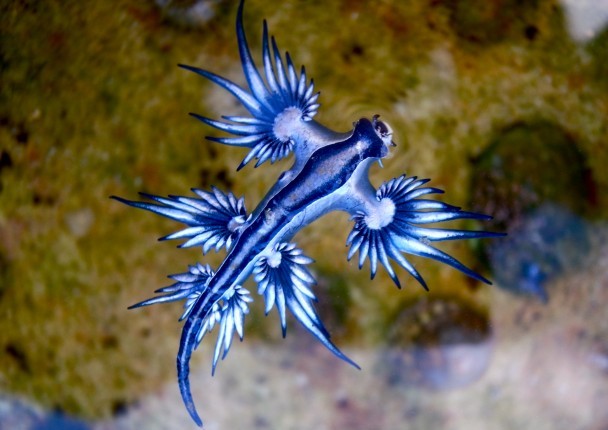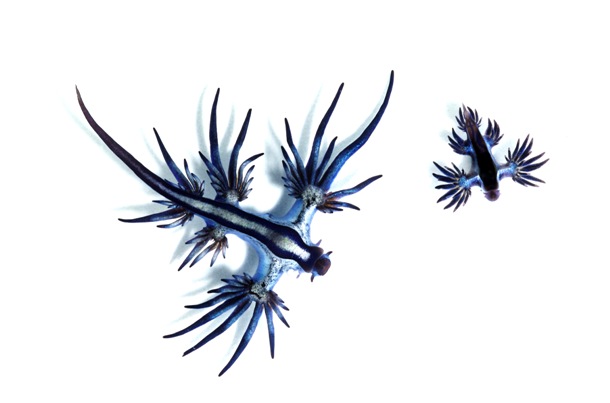Wow! Just look at that gorgeous …thing!
It’s a Glaucus atlanticus (more colorfully known as a sea swallow or blue dragon), and its a small, blue sea slug; “a pelagic aeolid nudibranch; a shell-less gastropod mollusk in the family Glaucidae.”
I’m not sure what any of those words mean, really. Especially “nudibranch.” But I can translate for you: It’s awesome.
Picking up the animal can result in a painful sting, with symptoms similar to those caused by the Portuguese man o’ war.
Yipes! Similar to the “man o’ war?” Wow. Not surprising, though, once you realize that it EATS PORTUGUESE MEN ‘O WAR FOR DINNER!
It feeds on hydrozoans (a group of animals in the same phylum as jellyfish), especially the highly poisonous Portuguese Man-O’-War. Although a sting by a Portuguese Man-O’-War is very painful to a human, the blue glaucus, like some other sea slugs, can swallow its prey’s stinging cells (known as nematocysts) without hurting itself. It may keep itself safe from the poison by releasing protective mucus and by hard barrier-like discs inside its skin. But the blue glaucus does more than simply protect itself against these stings. It stores the swallowed poison inside the up to 84 finger-like structures or cerata sticking out of its body, and then uses this poison to defend itself against other predators!
OK, so that’s not just awesome. It’s really, REALLY awesome.
But maybe don’t touch’em…
Attribution(s):“Glaucus atlanticus” by Sylke Rohrlach is licensed under CC BY-SA 2.0 via Wikimedia Commons; “Glaucus atlanticus & Glaucilla marginata” by Taro Taylor (source) is licensed under CC BY 2.0 via Wikimedia Commons.














